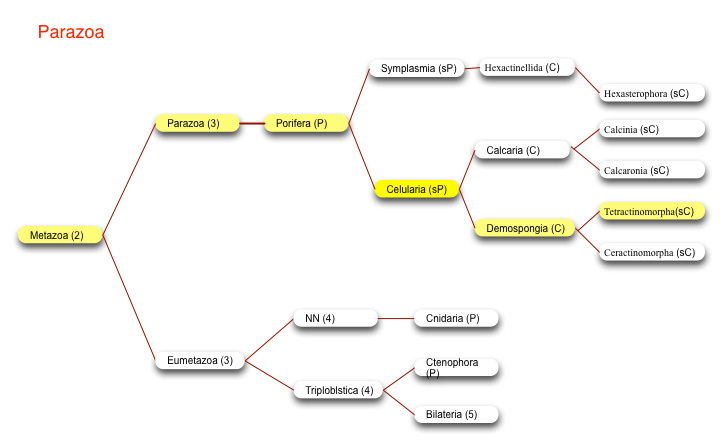
- Phylum Porifera
- Subphylum Cellularia
- Class Demospongiae: Demosponges (Figures 1B, C, and F). With siliceous spicules; spicule skeleton may be supplemented or re placed by an organic collagenous network ("spongin"); marine, brackish, or freshwater sponges, occurring at all depths. Sub class homoscleromorpha: Embryos incubated, larvae amphiblastulae; differentiation of spicules into mega‑ and microscleres not evident; all spicules very small (usually less than 100 um) and distributed in large numbers throughout body, with little region al organization. (e.g., Oscarella, Plakina, Plakortis)
- Subclass Tetractinomorpha: Reproduction typically oviparous, but incubation with direct development occurs in one order; larvae, when present, typically parenchymulae; with distinct megascleres and microscleres; megascleres organized into distinct patterns, either axial or radial; numerous orders and families (e.g., Agelas, Asteropus, Axinella, Calthropella, Chondrilla, Chondrosia, Cliona*, Corallistes, Geodia, Polymastia*, Rhabderemia, Spheciospongia, Stelletta, Suberites*, Tethya, Tetilla). This subclass now contains some sponges from the recently abandoned Sclerospongiae: the merliids (Merlia) and at least some tabulates (Tabulospongia).
Click to view Images of living calcareous sponge
September 22, 2013

